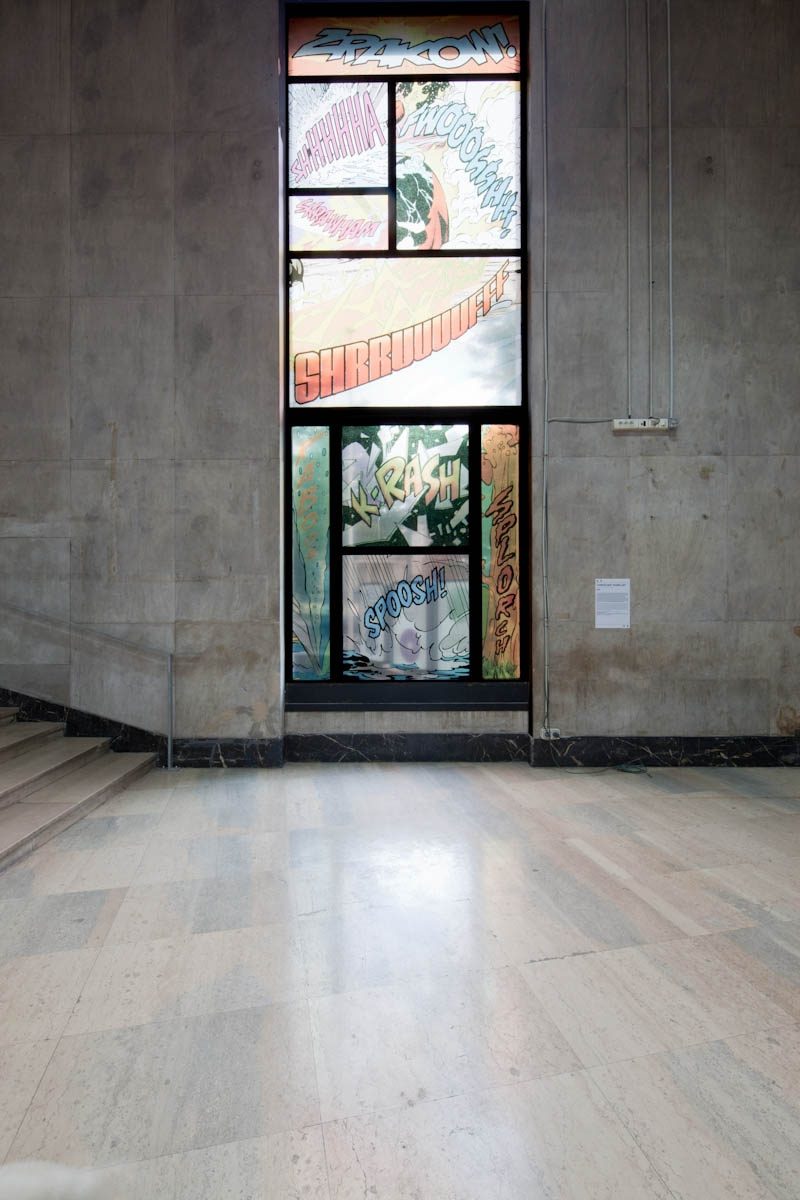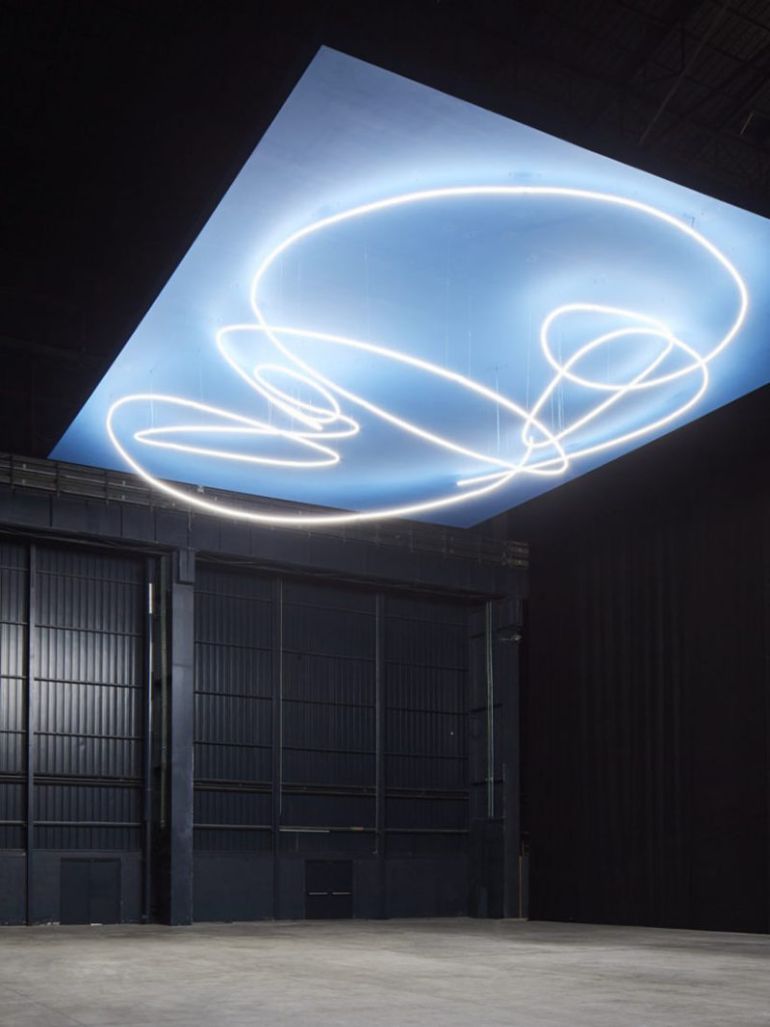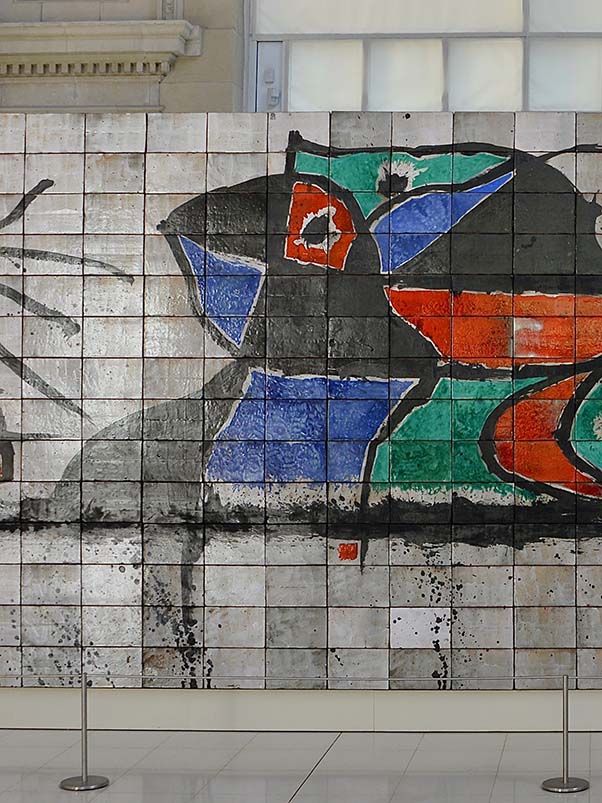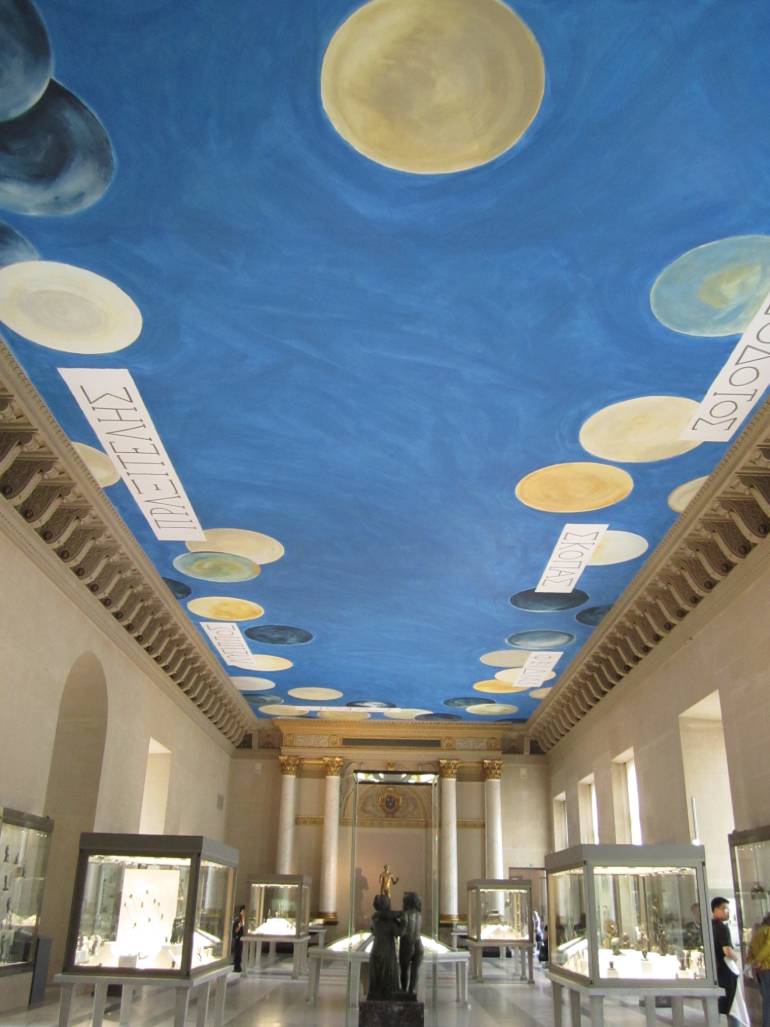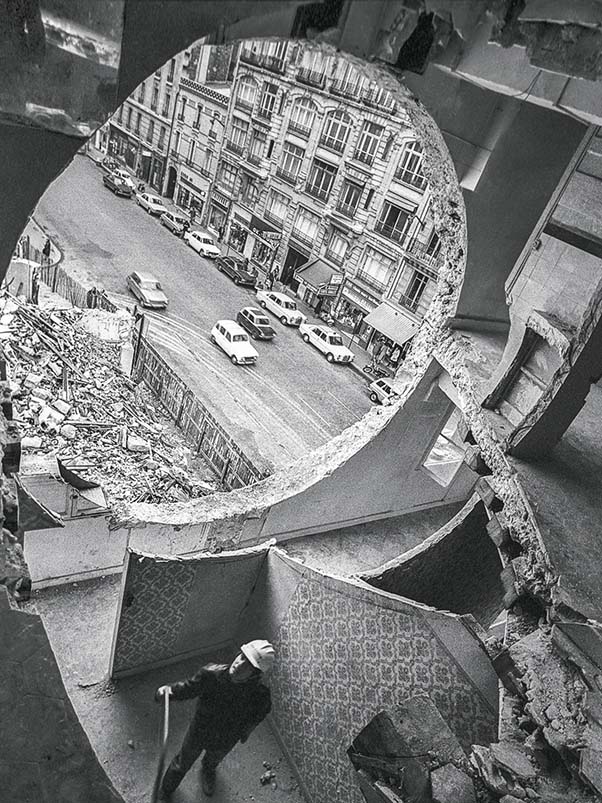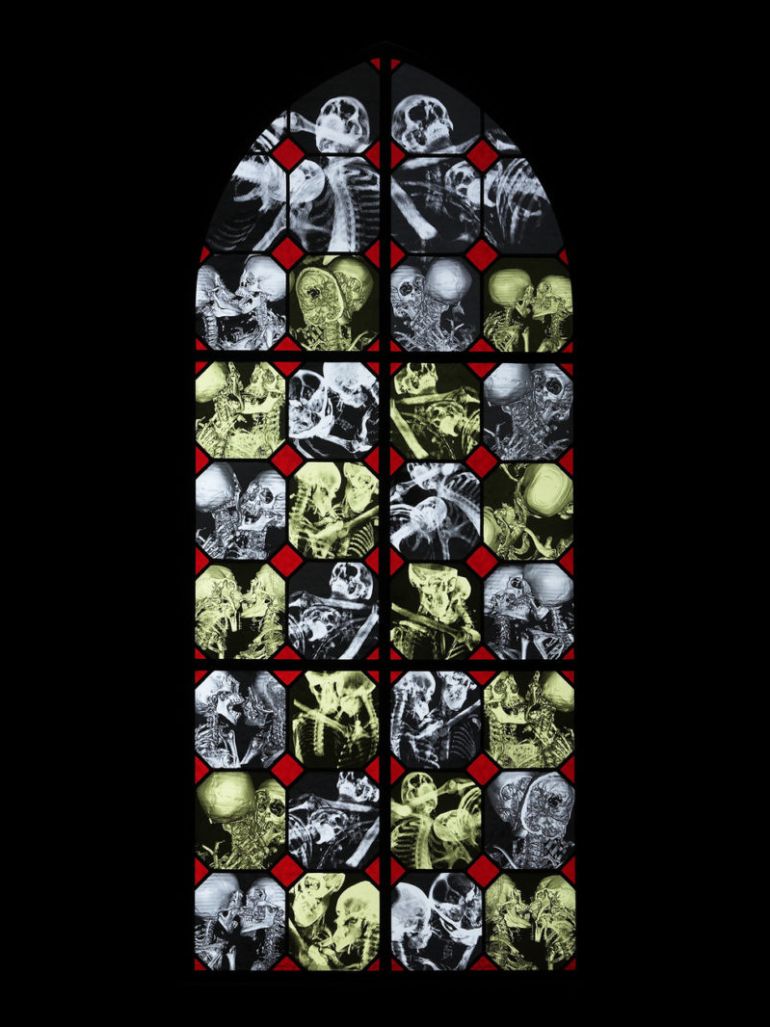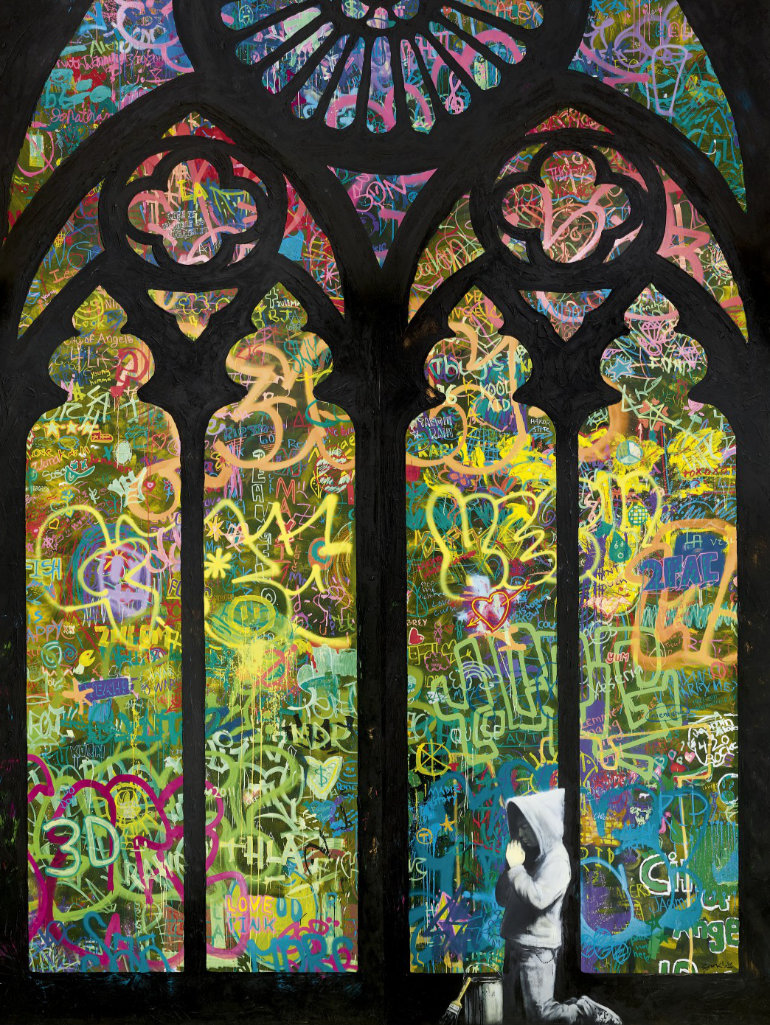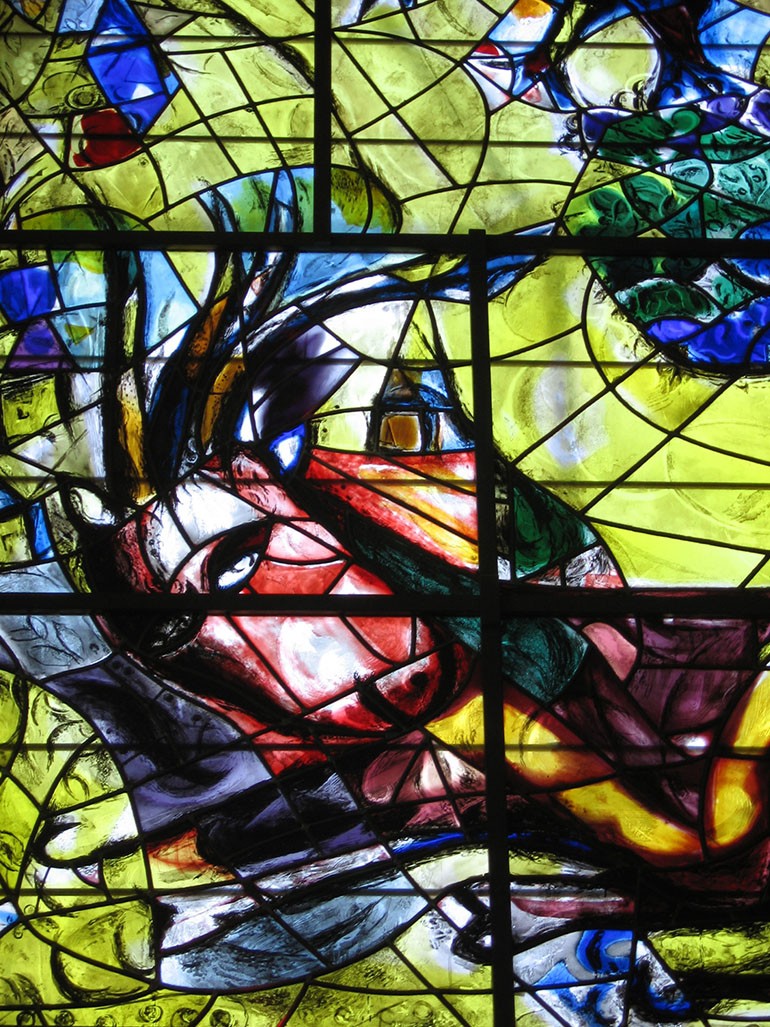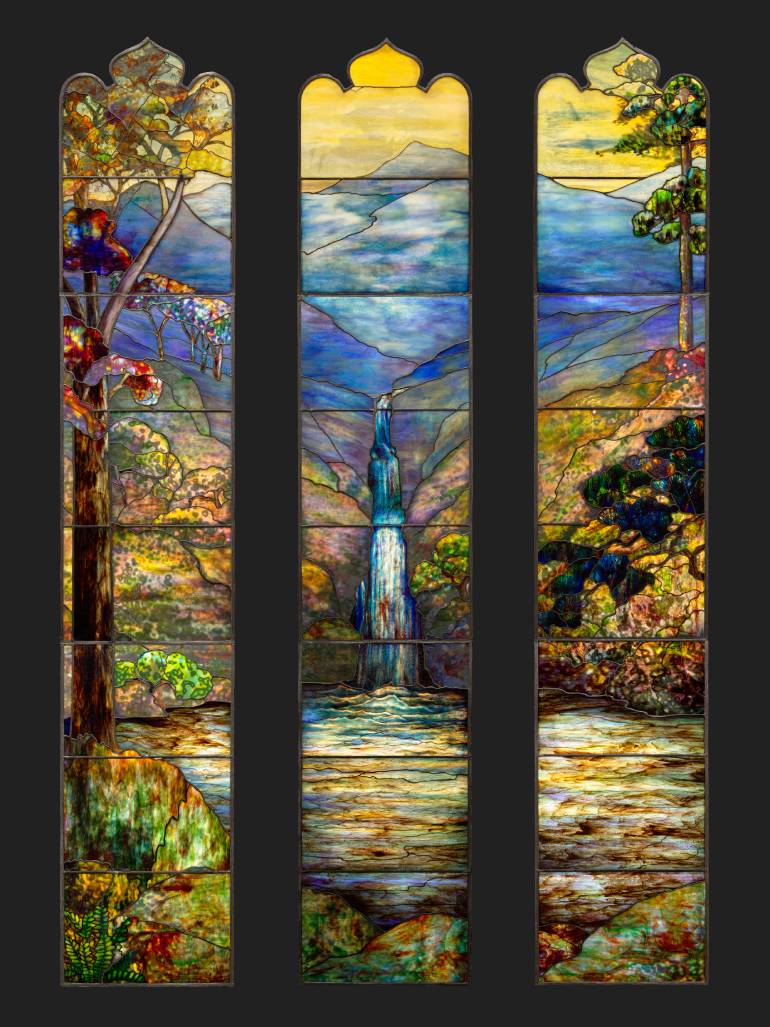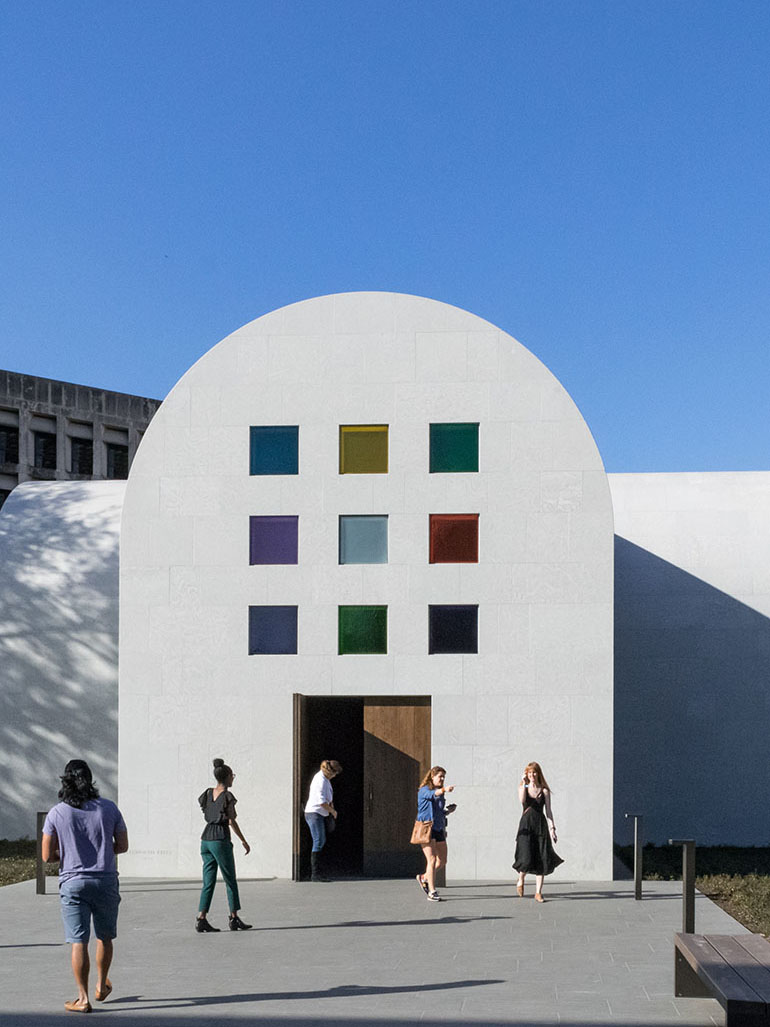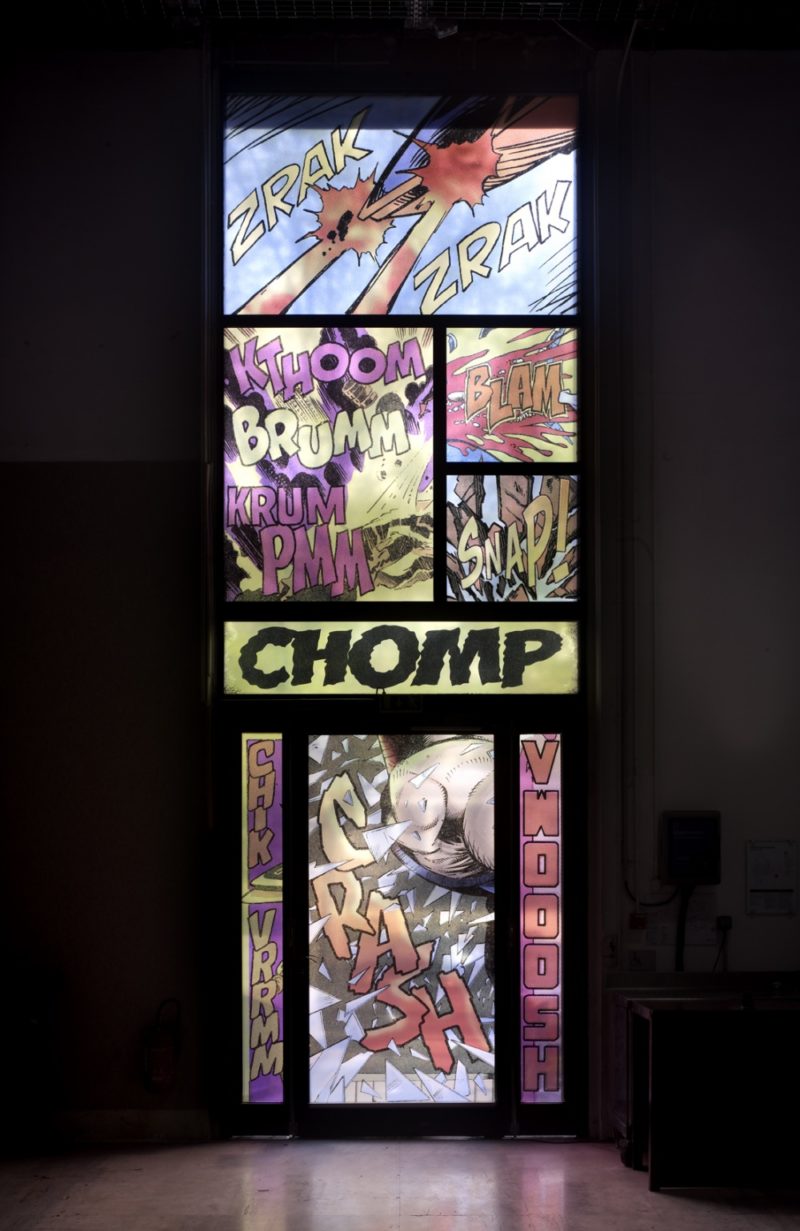
Christian Marclay’s installation at Palais de Tokyo
After spending a whopping $26 million on renovations, the Palais de Tokyo in Paris is now the largest contemporary art center in Europe. It has four levels and is as big as three football fields. With plenty of space, they have creatively allowed the building itself to become part of the art.
Artists were invited to install or paint works of art right onto the stairways, windows, and signs of the buildings. One of these artists commissioned to work on the building’s windows as a temporary intervention was Christian Marclay 1.
During the ten months of renovation of the Palais de Tokyo, Christian Marclay proposed an innovative design for the seven windows that structure the façade of the building, overlooking the Avenue du Président-Wilson.
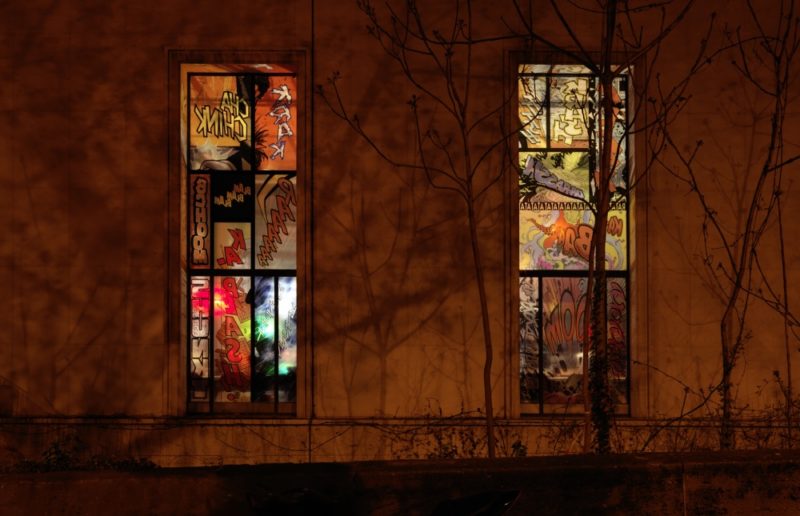
Seven Windows
Seven Windows encapsulates sound through glass. The result is a beautiful, colorful series that works to tell a story through the sequential panes of glass that mimic the organization of a comic strip 2.
For this new piece, the artist appropriated onomatopoeias 34 taken from comic books, directly referencing the graphic expression of the world of sound.
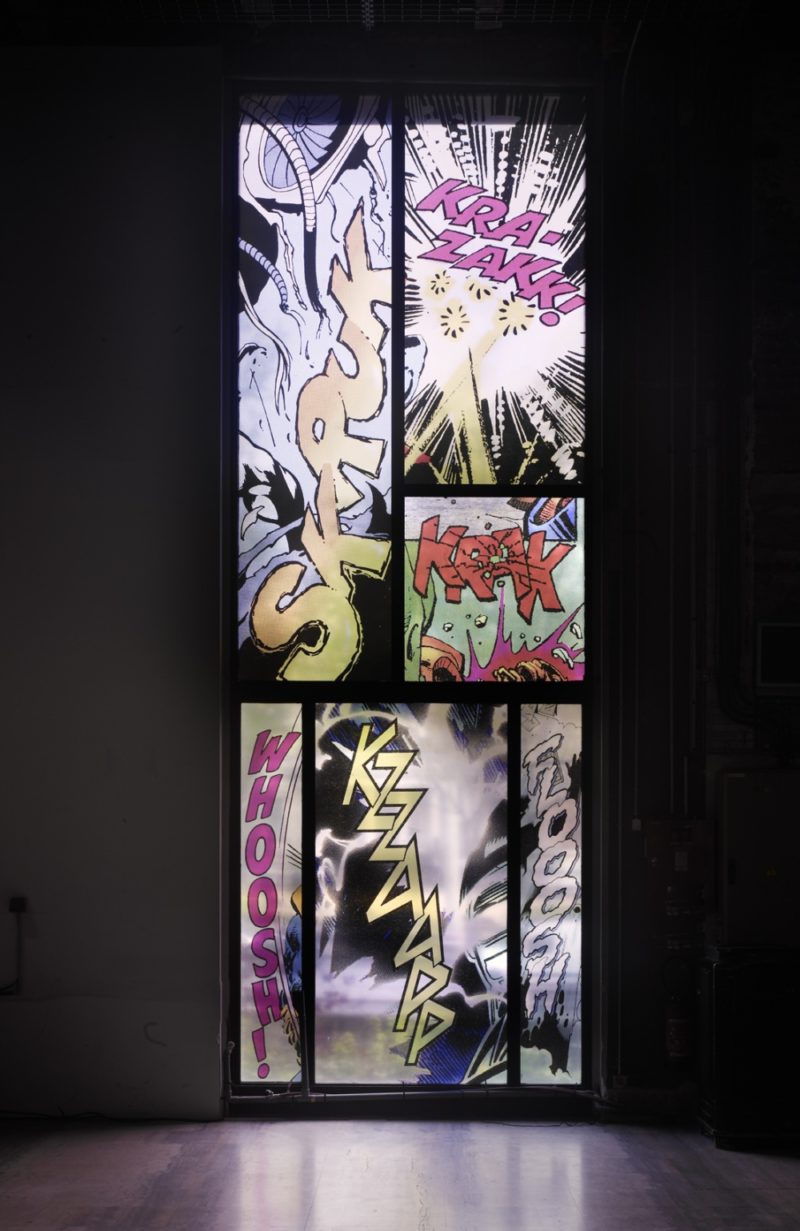
The artist has been exploring these familiar sound words since the 1980s through photographs, collages, and in recent years, musical scores.
The remarkable colorful collages of found sounds composed by Christian Marclay cover all the windows, so endowing it with sensitivity to music.
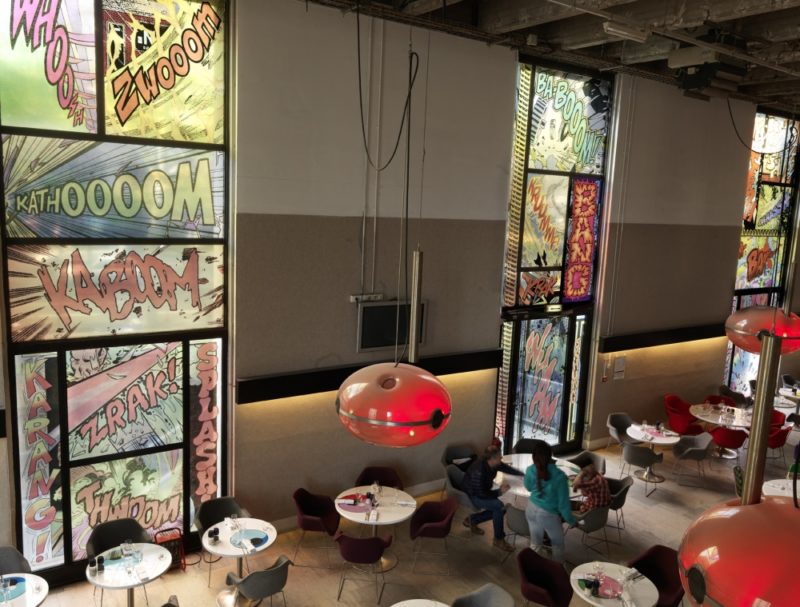
The division of these vertical walls of glass conjures up the organization of a page of a comic strip, giving rise to the impression of a sound story that unfolds in space as one move.
The onomatopoeias inspire the composition of each window to evoke a variety of cultures and errors, from Gothic stained glass windows 5 to American comic strips or Japanese hanging scrolls, also known as kakemono.
The various themes underline the universal nature of emotions expressed by the onomatopoeias, despite the differences between their codifications according to culture and language of origin.
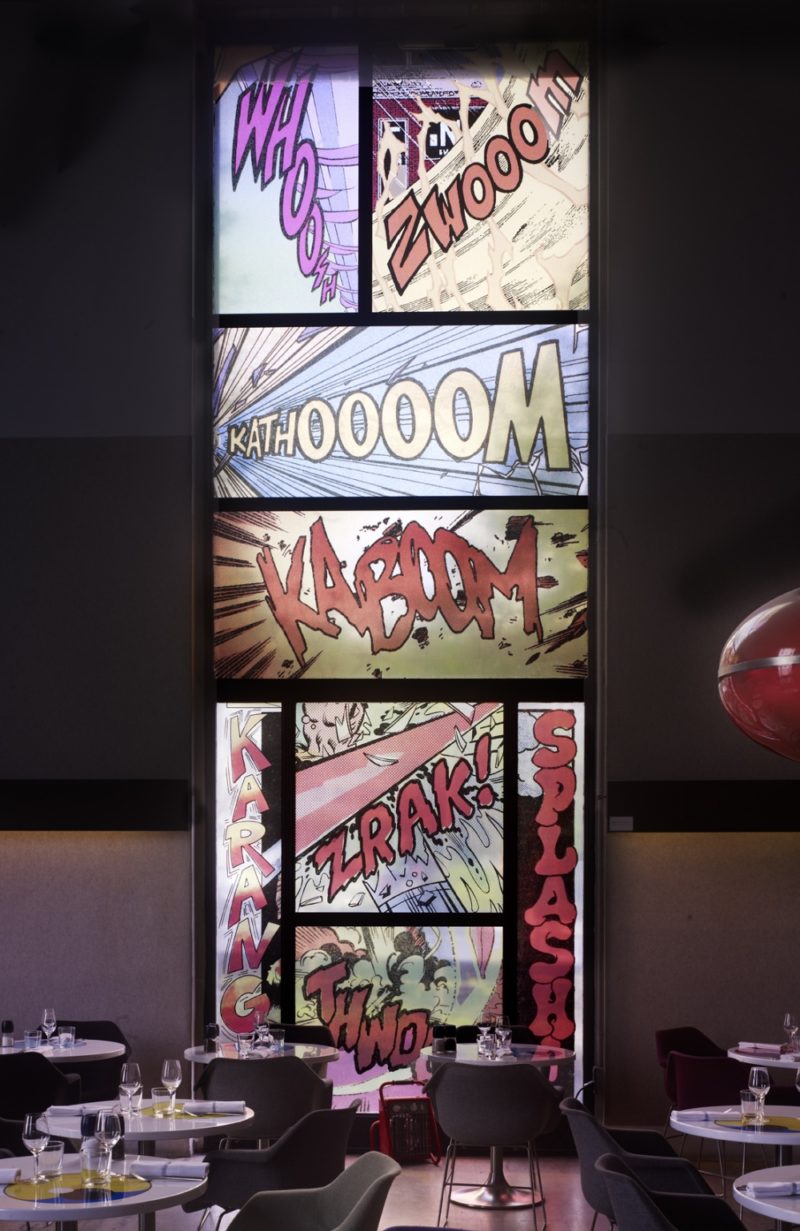
A little about Christian Marclay
Having recently received the Golden Lion award for the best artist at the 2011 Venice Biennale 6 for his video work The Clock 78 (2011), the Swiss American artist has been exploring the connection between visual arts and sound for the last three decades. Marclay engages in various practices such as performance, music, video, installation, and photography.
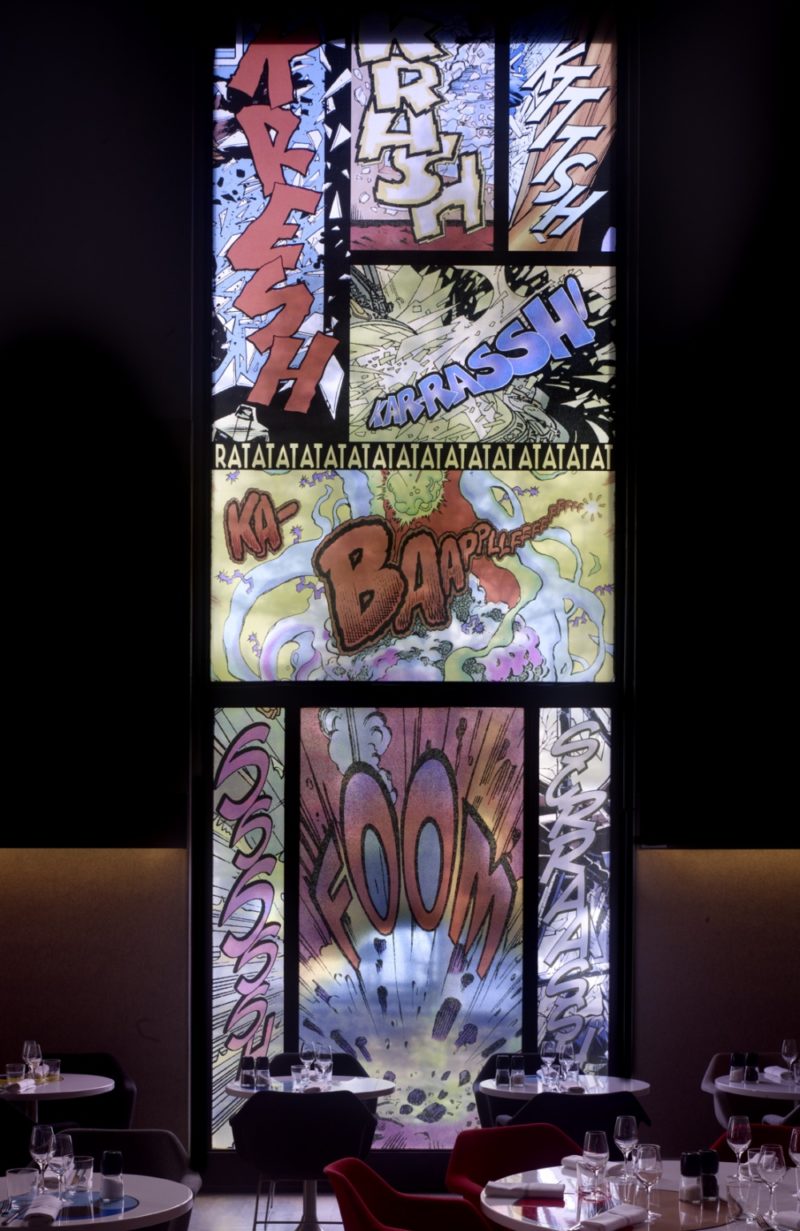
Christian Marclay is a London and New York-based visual artist and composer whose innovative work explores the juxtaposition between sound recording, photography, video and film. He was born in California in 1955 and raised in Geneva, Switzerland. His mother was American, so he held a double nationality.
Marclay studied at the Ecole Supérieure d’Art Visuel from 1977–1980 in Geneva, Switzerland. From 1977–1980 he studied sculpture at the Massachusetts College of Art in Boston. He also studied as a visiting scholar at Cooper Union in New York in 1978.
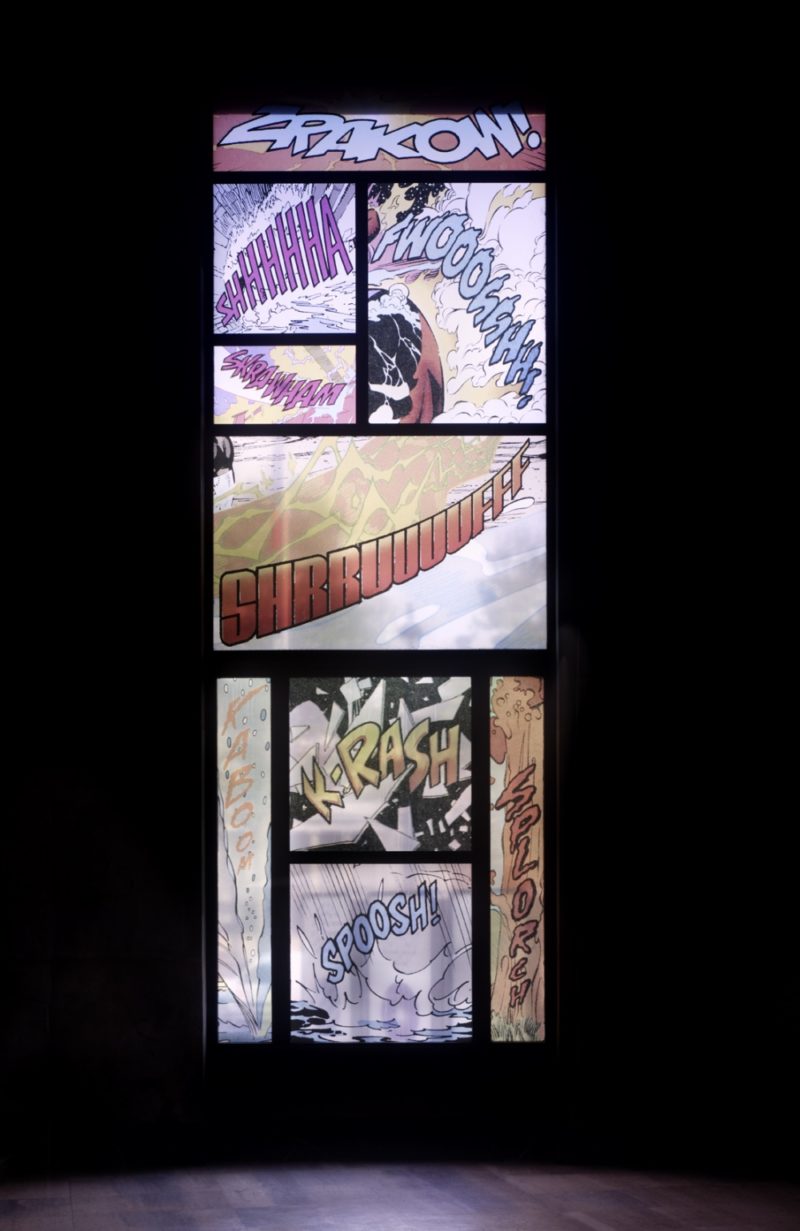
Video: Interview with Christian Marclay (in French)
1 min 49 sec
What makes his work stand out?
What makes his work stand out?
As a performer and sound artist, Christian Marclay has been experimenting, composing and performing with phonograph records and turntables since 1979 to create his unique “theater of found sound,” influenced by Marcel Duchamp.
Christian Marclay offered a unique, fresh and innovative voice that has inspired an entire generation of musicians, artists and theorists.
His intervention Seven Windows encapsulated sound through the glass. The result was an incredible, colorful series that tells a story through the sequential panes of glass that resembles the organization of a comic strip.
